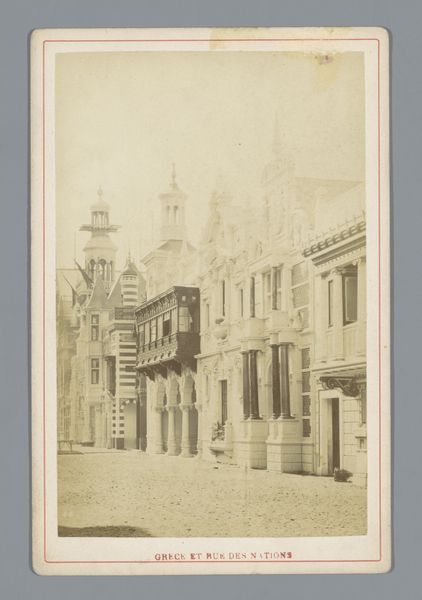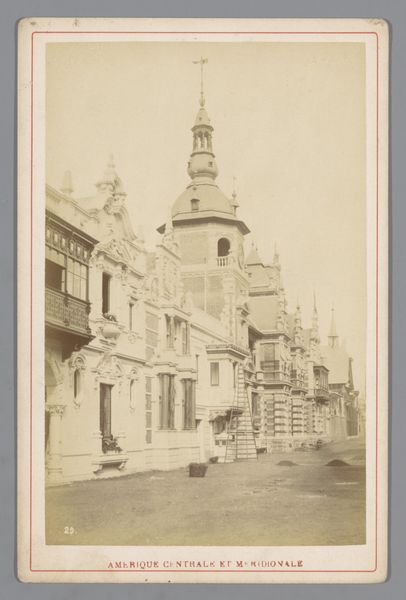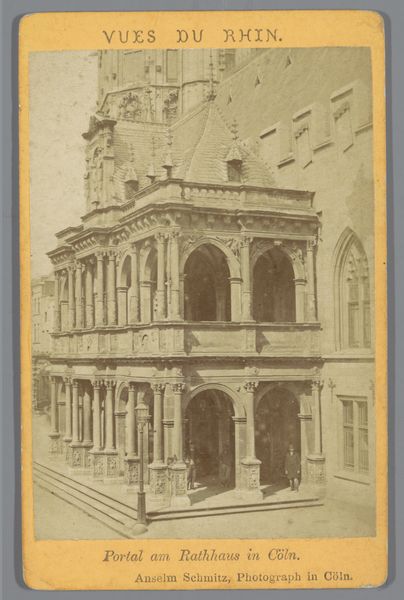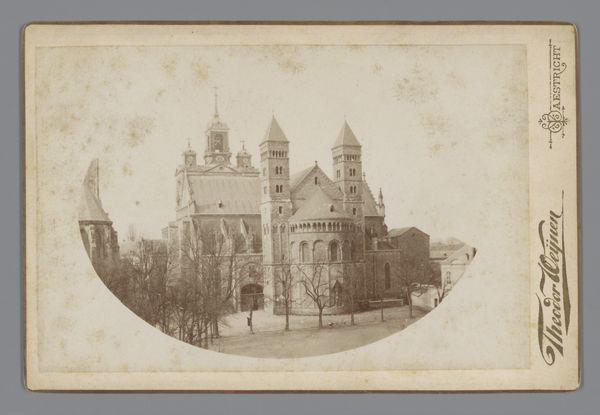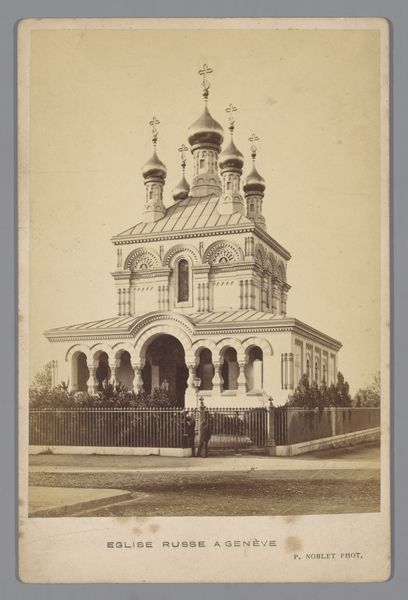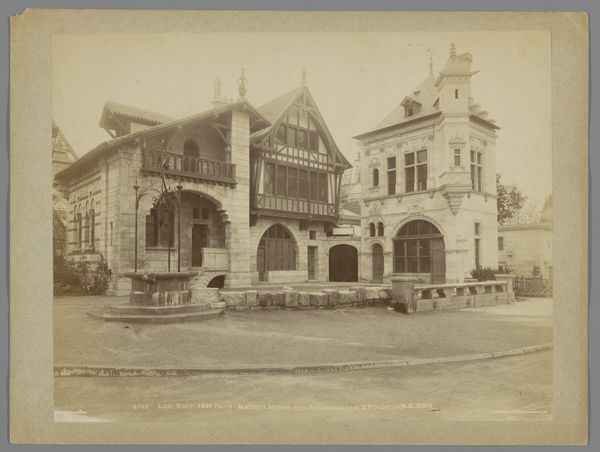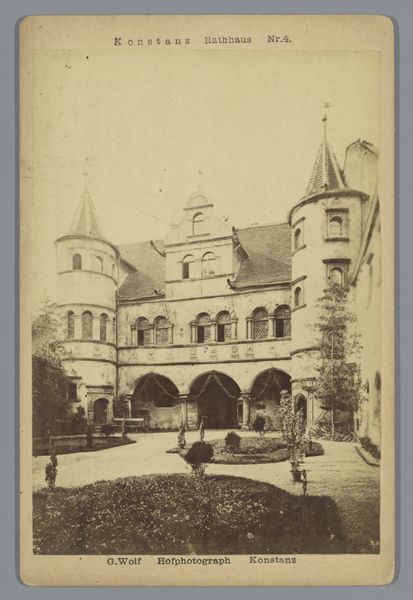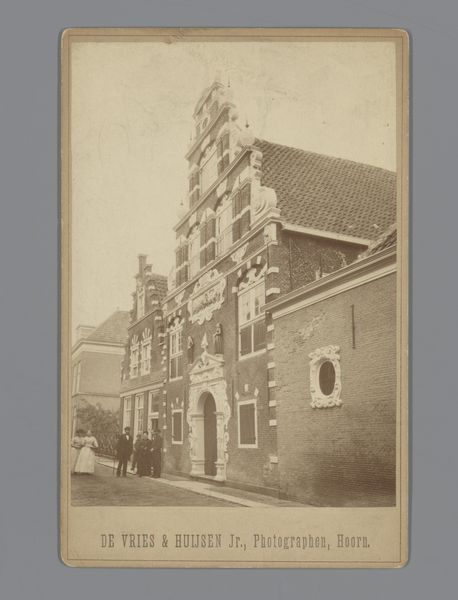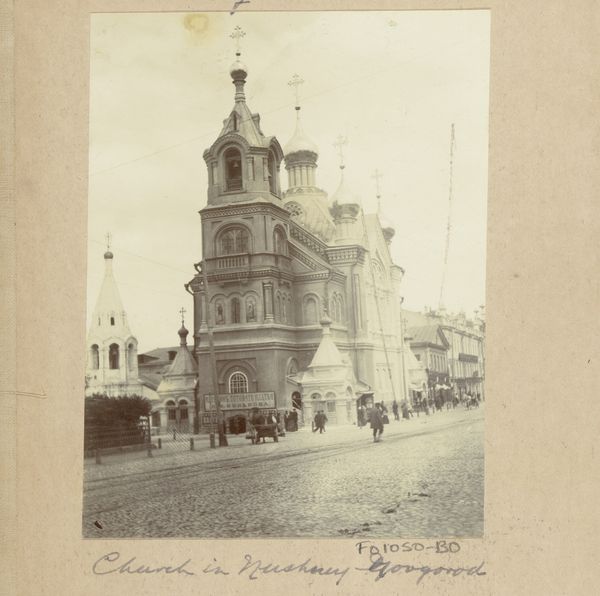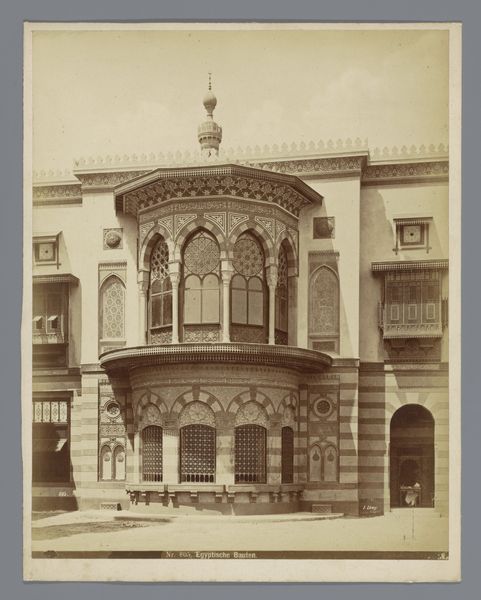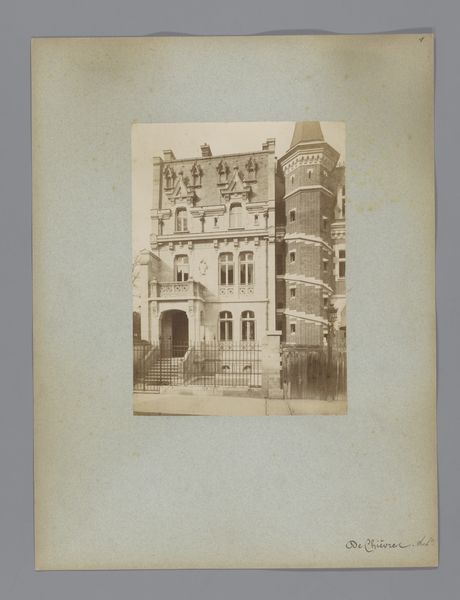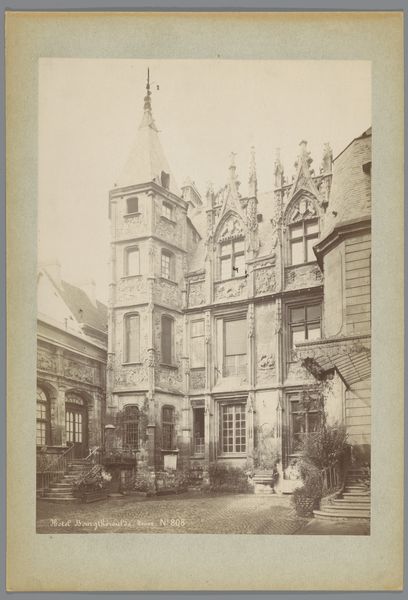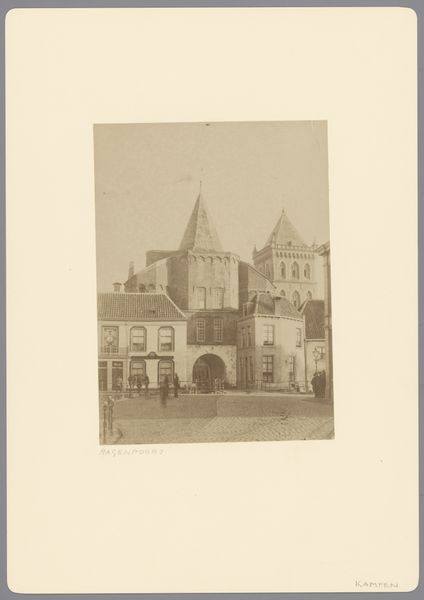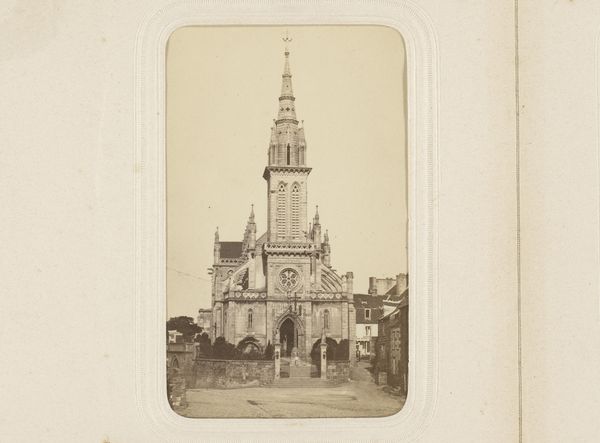
print, photography, site-specific
# print
#
photography
#
orientalism
#
site-specific
#
building
Dimensions: height 164 mm, width 107 mm
Copyright: Rijks Museum: Open Domain
Editor: This photograph, "Pavilions at the World Exhibition in Paris in 1878" by Adolphe Block, presents these incredibly ornate buildings. They look almost like stage sets! I'm really struck by the juxtaposition of textures and styles. How do you read this image? Curator: It’s fascinating, isn’t it? Consider the context. This isn't simply architecture; it’s about spectacle and the display of industrial power. These pavilions, constructed for the World's Fair, are fundamentally about the means of production. Each represents a nation's manufactured goods and artistic achievements, crafted to impress a global audience and influence the perception and flow of capital, with all of its attendant material concerns like labor and trade. What does that tension between national identity and material ambition communicate to you? Editor: It seems contradictory. They are built to impress but appear flimsy like a movie set. Were they temporary structures? Curator: Precisely. The temporality is crucial. These were never intended to be permanent structures; their value lay in the fleeting impression they made. The labor involved in erecting and dismantling these behemoths, the transport of materials… It all underscores the immense industrial capabilities of the late 19th century. Note also the "orientalist" style. Why would a nation choose this style to represent themselves to a global market? Editor: Maybe to exoticize their production to Western consumers? I guess this connects to consumerism, where products gain more appeal the less familiar they appear. Curator: Precisely! They weren't selling goods; they were selling an idea, a brand. What does this transient display tell us about the intersection of art, labor, and industrial progress? Editor: It really emphasizes how deeply art and economics are intertwined. Thinking about the labor involved and the fleeting nature of it all puts the art object in a completely new perspective. Thank you! Curator: It reveals the temporary and ideological nature of ‘high art’ displays. A welcome and challenging perspective indeed.
Comments
No comments
Be the first to comment and join the conversation on the ultimate creative platform.
